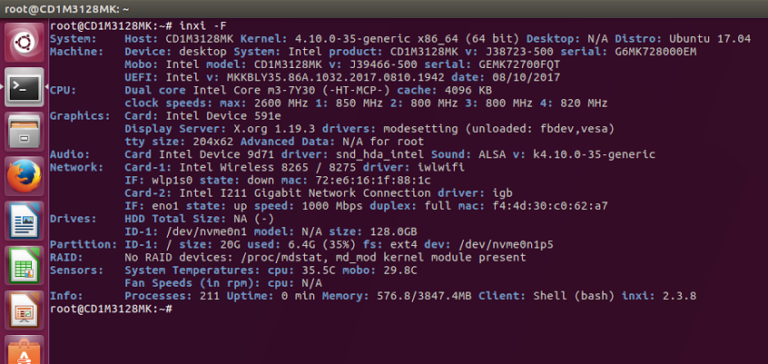

- Mini vmac ubuntu install#
- Mini vmac ubuntu update#
- Mini vmac ubuntu manual#
- Mini vmac ubuntu download#
Mini vmac ubuntu install#
An alternative would be to install forĪ second time, without repartitioning at all in Ubuntu, which would beĮasier but more time consuming. Ubuntu root partition (which was marked as bootable in the partition
Mini vmac ubuntu update#
To update the shadow map in the MBR, then boot again from the UbuntuĬD and install GRUB by hand. The fix was to reboot, use the partition map tool in rEFIt Partition map (presumably it assumes all GPT systems are Partition map but did not shadow this this information into the MBR The reasonĪppears to be that the Ubuntu partition editor rewrote the GPT
Mini vmac ubuntu manual#
Repartition the disk! Use the manual partition editor and format the You should land up at an Ubuntuĭesktop, running directly from the CD. Linux kernel directly and will be able to skip this. I am sure that one day soon rEFIt will boot Ubuntu's Should contain a shadow of this information and is used here primarily by The new GPT partition format can handle very large disks andĬontains the canonical partition map the old MBR partition map

Mini vmac ubuntu download#

The dimensions and paintĬolours match exactly, although the width of the optical drive slot is wider on In the photo below, the ICBM (Intel chipīased Macintosh) is on top, with the G4 system underneath. Ubuntu is a Debian-based distribution focusing on desktop usabilityĪnd regular stable releases.

The i386 Mac Miniĭual boots MacOS X and a pre-release of Ubuntu 6.10 We have both an i386 (Intel) and a PowerPC Mac Mini. Words they are regular PCs using Intel's Centrino platform, modulo some fancy firmware, and withĪ little persuasion can run common or garden i386 Linux. Mac Mini systems shipped since February 2006 contain Intel "Core Duo" processors and an Intel Installing Debian on these earlier PowerPC G4 based systems I have now addedĪ short guide to installing Ubuntu on the newer Intel based systems. This page primarily describes a technique for The first generation of Mac Mini systems used PowerPC G4 processors. (This article has been translated to Spanish by Maria Ramos " Gracias, Maria!) Installing Debian GNU/Linux on the Mac Mini


 0 kommentar(er)
0 kommentar(er)
